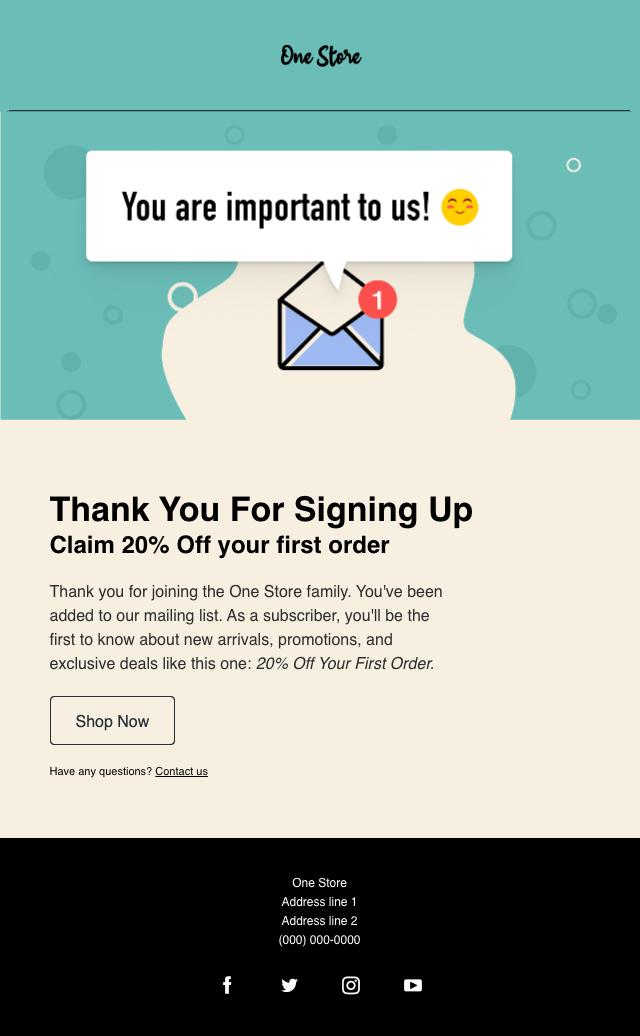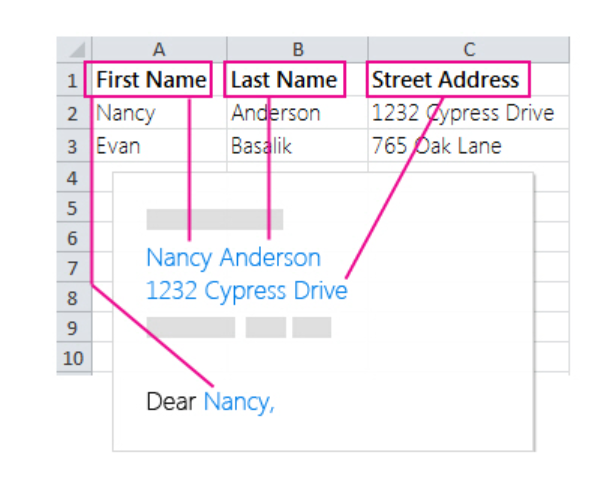
A decade ago, you probably relied on a few key programs to align all your marketing tasks and projects. But things are different today, when there’s an app for just about anything. This certainly makes us more efficient and productive, but it means we need ways to keep everything organized and streamlined. That’s why integrations are so important — especially for email.
Email integration connects your email server to all the systems and tools you use every day. It’s one of the easiest ways for a business to streamline communication, improve customer experiences, and reduce costs.
If you don’t know where to start with email integration, this guide is for you. Below, we’ll cover everything you need to know about the best email integration tools, benefits, best practices, and more.
What is email integration?
Email integration is the process of connecting your email platform with the other platforms your business uses. This can include CRM software, payment systems, marketing platforms, and social media accounts. The purpose is to simplify communications and streamline your everyday tasks and data.
This process isn’t just for companies with many complex software programs. Small businesses benefit just as much from seamless integration, as it reduces staff hours and saves costs. And email integration isn’t industry-specific. Businesses in every field, from restaurants to tech startups, benefit from integration.
Email integration platforms make this easier by automating connections between tools and programs. For instance, they can sync your contacts from your CRM software and email program so everything’s up to date.
Benefits of email integration
The main goal of email integration is to make things simpler. Here are a few crucial ways integration can save you time, money, and energy.
Reduce context switching
Context switching involves going from one task to another. This can bog down your processes and make communication more difficult.
Here’s an example: Say you’re collaborating with your marketing team on a social media campaign. If you’re communicating via email, you have to switch apps between your social media pages, research tools, and email platforms. Each switch is an opportunity to get distracted or miss crucial information.
But when you integrate your email and social media marketing, you can collaborate in real time without switching between platforms.
Optimize resources
Email integration allows you to make the most of your limited resources. By integrating your email and marketing efforts, you’ll cut out wasted time and reduce costs. Instead, one team member can handle multiple tasks at once.
You’ll further optimize your resources by using an email integration platform versus building your email integration in-house. With the right platform, you won’t have to hire a software developer or code your own integrations.
Improve email deliverability
Email deliverability is how often emails are successfully delivered to subscribers’ inboxes. Contrary to popular belief, not all emails are automatically accepted by an email server. Your recipient’s email server might reject a message it perceives as spam or a phishing attempt. Email integration improves deliverability by verifying email addresses, personalizing messages, and improving your IP reputation.
Get personalization opportunities
How does email marketing successfully drive conversions? By sending personalized emails that actually appeal to your customers.

Many email integration platforms offer segmentation and targeting tools. These tools allow you to categorize recipients on your email lists and send emails that fit each group’s needs or priorities. For example, if your business serves both businesses and individuals, you can separate the two groups in your email integration software. That way, individual customers won’t receive b2b-related content.
Features of email integration
Every business’s email integration process looks slightly different. But there are a few common email integration tools that all businesses can use. Here’s an overview.
Automated emails
Automated emails save your team time while improving communications with your customers. A good example is an automated response to customer queries. This response will let the customer know you’ve received their question and offer a time frame for an expected response. With the right email integration software, automated emails are easily tailored to fit your brand’s voice. Plus, you can update them as needed.
Mail merging
Mail merging makes it easier to send bulk emails to your customers. The process involves merging a list of customer data with your email integration template. Then, you can personalize each message.

Without the right software, creating the data lists and templates necessary for mail merging is difficult. This is another major benefit of working with an email marketing integration platform.
Tracking and analytics
A successful email marketing campaign doesn’t just involve sending messages out to the right people. It also involves monitoring and analyzing which messages work and which don’t.
With email integration, you can track key data sets, such as the percentage of emails received, the bounce rate, and click-throughs. Your email integration software can then analyze this data in real time and present results.
Contact management
Email automation isn’t useful without contact management. The best email integration software keeps detailed contact lists and sorts recipients according to your preferences. That way, you can send bulk emails to a specific group. This helps with organization and allows for better email personalization.
Email integration in CRM
Now that we’ve covered the general benefits of email integration, let’s dive into CRM email integration and how it will help your marketing efforts.
What is a CRM platform?
A customer relationship management (CRM) platform is a tool to help you manage interactions with your customers. A reliable CRM platform can help you efficiently foster better relationships. The goal is to improve customer experiences and ultimately grow your business.
Businesses of all sizes engage in CRM with or without a dedicated platform. However, software simplifies CRM processes and helps keep your customer data organized without taking up too many staff hours. This is one of the most reliable tools to boost your marketing efforts.
How email integration helps
Email marketing and CRM go hand-in-hand. When you integrate email marketing with your CRM, you can monitor and record every customer interaction. This allows you to analyze your email data, keep detailed contact lists, and automate emails all from a single platform.
Consider the following email integration example of a brewery that hosts weekly concerts and events. The brewery owner sends each week’s itinerary to all the customers on their contact list. They want to know how these weekly emails are affecting attendance but don’t have the time to manually track and analyze each customer interaction.
With CRM integration, they can see how many customers receive the emails, open them, and click through to the brewery’s website. This data helps them improve their weekly content and drive more attention to their events.
Popular email integration platforms
Chances are, you don’t have to change your email platform to integrate with your CRM and other tools. The most popular email servers, including Microsoft Outlook and Gmail, can integrate with other software. Both of these servers automatically integrate with other apps in their same software families. However, they also integrate with other tools when combined with a third-party platform such as Constant Contact.
Here’s a quick overview of integrations provided by each platform.
Integration with Microsoft Outlook
Microsoft Outlook integrates with other Microsoft products, including Word, Excel, and PowerPoint. Outlook’s enhanced features and organization tools make it a popular choice for data-heavy businesses, such as fintechs, insurance companies, and startups.
Integration with Gmail
Gmail automatically integrates with other Google apps, such as Google Drive, Sheets, and Google Ads. This is a more affordable platform for email integration than Outlook and offers more robust security and marketing features. Gmail is ideal for small businesses and marketing teams.
Security in email integration
Unfortunately, phishing attacks and other email crimes are on the rise. Email is still an incredibly important marketing tool and shouldn’t be disregarded because of potential risks. However, business owners must understand the importance of security in email integration.
A dedicated email marketing platform like Constant Contact verifies your recipients’ email addresses to improve security. It also offers email authentication, a process to confirm your domain’s security so your emails aren’t marked as spam.
Email API integration and deliverability
An email application programming interface (API) is a tool developers use to connect an email server with other apps. It allows you to connect to your email server’s functionality from another platform.
The main purpose of an API is to improve email deliverability. Remember that mass emails are not automatically delivered to every recipient’s inbox. To boost deliverability, you must prove that your domain is authentic and safe. All of the features of email integrations discussed above, including automation and personalization, support this process.
Can you integrate email functionality and boost deliverability without an API service? Yes — but it’s also very difficult and time-consuming. If you don’t have the time or tech skills to build out your own API, working with a dedicated platform like Constant Contact is a more affordable choice in the long run.
Create more engaging emails
Improving deliverability is only the first step in successful email marketing. You also need to create engaging emails that your customers will actually read and interact with. Email integration helps with that.
One strategy to create more engaging emails is to integrate with your ecommerce platform. For example, say you sell hand-made products on Shopify. By integrating your email service with Shopify, you can send emails that link directly to your products and encourage customers to click.
Another tool is email integration with social media. This integration goes both ways. You can add social media buttons to your emails, driving customers toward your Facebook page and other social profiles. You can also add email buttons to your social posts. The goal is to add more interested customers to your email lists and engage email recipients with valuable, trending content.
Email integration tools and software
Regardless of which email server you use, you’ll need additional software to integrate with your CRM and other apps. Third-party tools facilitate seamless integration. They also allow you to interact with your apps and email data from a single comprehensive platform. Here are a few popular tools you might use for email integration:
- Zapier: Zapier is a third-party automation tool that connects your platforms. Its email system, Email by Zapier, is designed for smooth integration.
- Hubspot: Hubspot is a CRM platform that integrates with several other apps, including Gmail and Outlook. Zapier can also support email integration in Hubspot.
- Salesforce: Salesforce is another popular CRM platform with a range of products. Most email servers offer email integration with Salesforce.
Constant Contact Email Integration
Why choose Constant Contact for your email integration? With Constant Contact, you’ll get custom email marketing, events, text message marketing, and social media tools, automation capabilities, integrations, analytics, and a dedicated API. This platform is affordable and accessible for businesses of all sizes. With Constant Contact, you can set up your integration right away.
If you’re ready to learn more about email integrations and how streamline your email marketing, get started with Constant Contact today.
FAQ
How can you use email integrations in marketing?
Email integrations allow you to combine your email marketing with other platforms, such as your social media accounts, CRM platform, and ecommerce site. The result? Higher deliverability and more engaging emails that will encourage your customers to visit your website or storefront.
What are popular email integration features?
Some of the most popular email integration features include:
- Automation: Automatically send emails to certain recipients, i.e. a “request received” email for customers who reach out to your customer support.
- Tracking and analytics: Email integration allows you to track key performance indicators, such as deliverability, in your CRM.
- Mail merging: With mail merging, you can send personalized emails in bulk by inputting information from your contact lists.
How does Constant Contact email integration work?
Constant Contact is an email marketing platform that helps you craft engaging emails and integrate with other marketing apps you use every day, including email integration in websites and social media.




